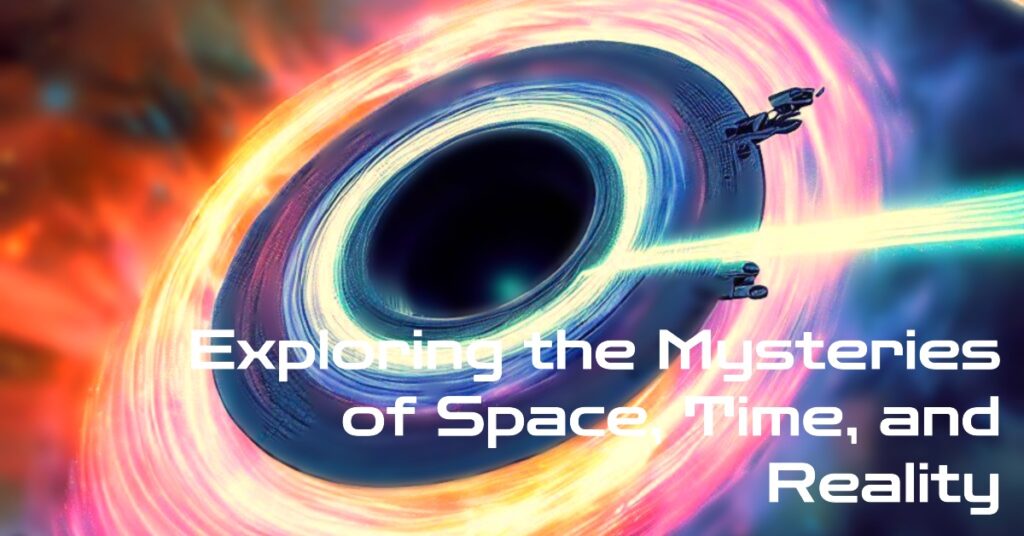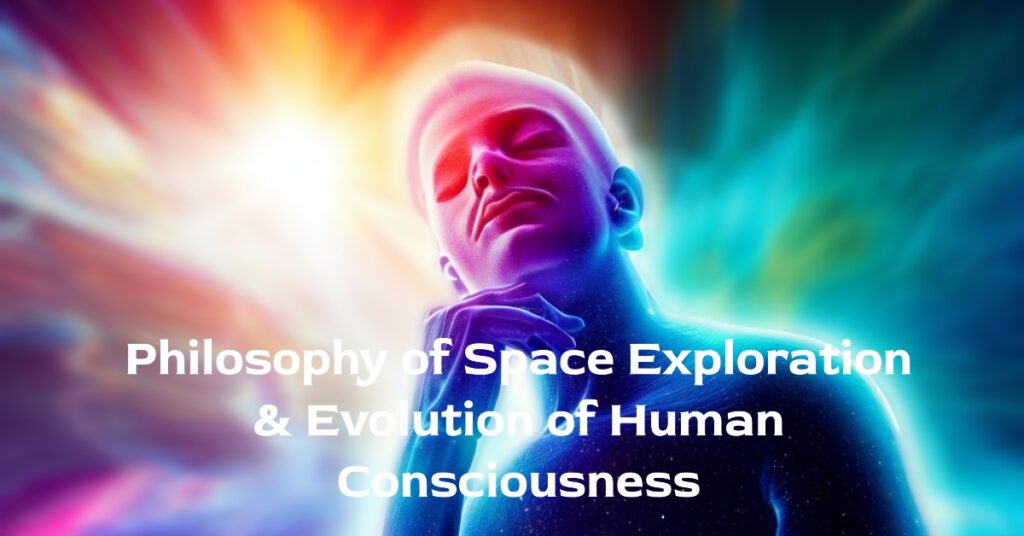The Universe and Beyond: Insights from Astrophysics
Astrophysics is a fascinating field of study that aims to understand the physics of the universe beyond our world. It is concerned with studying the properties, behavior, and interactions of cosmic phenomena like stars, planets, galaxies, black holes, dark matter and dark energy. Through astrophysics, we have gained insights into many aspects of our universe that have challenged conventional thinking about space-time and reality.
One of the most significant contributions of astrophysics to our understanding of space-time has been its role in uncovering the mysteries surrounding the origins and evolution of the universe. The Big Bang Theory is one such concept that has been developed through astrophysical observations.
The theory suggests that about 13.8 billion years ago, all matter in the universe was concentrated in a single point with extremely high density and temperature. Then, suddenly it began expanding rapidly leading to rapid cooling down which gave birth to the stars and galaxies that we see today.
Astrophysics has also helped us gain an understanding of many enigmatic phenomena related to time such as time dilation – a concept proposed by Einstein’s theory of relativity which states that time runs differently for different observers depending on their speed or gravity level while being relative to each other. Another mind-bending aspect associated with time is black holes- objects so dense they exert immense gravitational force on everything around them including light thereby distorting the space-time continuum around them.
In addition to these insights into space-time phenomena, astrophysics has provided some revelatory findings about what we perceive as ‘reality’. Quantum mechanics- A theoretical framework used in astrophysics shows us how observation plays a crucial role in shaping reality itself: what you observe can vary based on how you look at it or where you’re looking from!
This seemingly bizarre phenomenon has significant implications for our understanding not only about reality or nature but also its effect on our own perception of the world. Astrophysics has played a significant role in shaping our understanding of the universe and beyond.
By studying cosmic phenomena, it has challenged our perception of space-time and reality itself. The next sections will delve further into each aspect with a detailed exploration of concepts such as the expansion of the universe, black holes, quantum mechanics, and gravitational waves to uncover some more intriguing discoveries that have come out of this fascinating field of study.
Space: The Expanding Universe
The Big Bang Theory
When you hear the phrase “big bang,” you might think of a loud explosion, but the big bang theory is actually much more complex. It’s a scientific model that explains how the universe began from a single point of infinite density and temperature, and then rapidly expanded, creating space and time as it progressed. This explosion happened about 13.8 billion years ago and is still happening today.
Scientists have gathered evidence to support this theory by studying the cosmic microwave background radiation, which is leftover radiation from shortly after the big bang. They’ve also observed that galaxies appear to be moving away from each other, indicating that the universe is expanding.
The Role of Dark Matter and Dark Energy
Despite our growing understanding of the universe’s origins, there are still many mysteries left unsolved – particularly when it comes to dark matter and dark energy. These two concepts are essential for understanding how our universe behaves on a large scale.
“Dark matter” refers to an invisible substance that scientists believe makes up approximately 85% of all matter in the universe. We can’t detect it directly because it doesn’t interact with light or other forms of electromagnetic radiation.
However, its presence can be inferred by observing its gravitational effects on visible matter. Dark energy makes up approximately 68% of all energy in the universe, and like dark matter, we don’t know exactly what it is or how it works.
What we do know is that its presence causes space to expand at an accelerating rate – the opposite of what gravity would predict without it present. Although much remains unknown about dark matter and dark energy, they play a crucial role in shaping our understanding of space-time phenomena within our vast universe.
Time: Relativity and Black Holes
The Theory of Relativity and the Nature of Time
Albert Einstein’s theory of relativity revolutionized our understanding of space and time. According to Einstein, the laws of physics are the same for all observers, regardless of their motion. He also proposed that time is relative — it depends on your position and motion relative to other objects.
This revolutionary idea completely upended our classical understanding of time as a constant, unchanging force that ticks away at a steady rate. Instead, Einstein showed us that time can speed up or slow down depending on where you are in the universe.
For example, if you were to travel at high speeds close to the speed of light, time would appear to slow down for you compared to someone on Earth. This phenomenon is known as “time dilation” and has been proven experimentally countless times since Einstein first proposed it.
The Mystery of Black Holes
Black holes are one of the most mysterious phenomena in astrophysics. These objects are so incredibly dense that they warp space-time around them, creating a gravitational pull so strong that nothing — not even light — can escape.
The intense gravitational forces generated by black holes can also have a dramatic effect on time. According to Einstein’s theory, as an object approaches a black hole’s event horizon (the point beyond which nothing can escape), time appears to slow down from an outside observer’s perspective.
At this point, our current understanding of physics breaks down because we don’t know what happens inside a black hole’s event horizon or how it affects space-time beyond its boundary. Some scientists believe that black holes could be gateways to other universes or hold clues about the fundamental nature of reality itself.
Challenging Our Understanding of Physics
Einstein’s theory of relativity has fundamentally changed our understanding of time and space, but it also challenges our current understanding of physics. The laws of classical physics break down at the subatomic level, where quantum mechanics takes over. Quantum mechanics suggests that particles can exist in multiple states simultaneously (known as “superposition”) and that their states are only determined when they are observed.
This creates a strange and counterintuitive reality where particles can instantaneously affect each other’s behavior regardless of distance (a phenomenon known as entanglement). The challenge now is to reconcile these two seemingly incompatible theories — general relativity and quantum mechanics — into a single, unified theory of physics that can explain everything from the smallest subatomic particle to the largest structure in the universe.
Reality: Quantum Mechanics
Quantum mechanics is the branch of physics that deals with the behavior of matter and energy at the atomic and subatomic level. It challenges classical physics in many ways, as it suggests that particles don’t have fixed properties until observed or measured and that they can be in multiple states at once. These properties are known as “superposition.”
The concept of superposition refers to a state where a particle can exist in two or more states simultaneously. For example, an atom could be in two places at once or spin both clockwise and counterclockwise at the same time.
This may seem counterintuitive to our everyday experience but is supported by numerous experiments. Another concept that challenges classical physics is entanglement, where two particles can become connected in such a way that their properties become linked.
For example, if one particle is measured to have a certain spin direction, its entangled partner will instantly have the opposite spin direction, regardless of the distance between them. One aspect of quantum mechanics still under debate today is the role observation plays in shaping reality.
The act of observing or measuring appears to collapse the wave function (the probability distribution describing all possible outcomes) into a single outcome. Some physicists suggest that this suggests consciousness affects reality at a fundamental level- but this idea remains controversial among scientists.
Entanglement: More than meets the eye
The idea of entanglement -where particles seem to affect each other regardless of space and time- has fascinated scientists for decades since Einstein first called it “spooky action at a distance.” But what’s really fascinating about entanglement is how it challenges our understanding not only of space-time phenomena but also our understanding of reality itself. It’s hard not to find something magical about entangled particles- how they can instantaneously communicate with each other even when separated by billions of miles. But while we know it exists and have tested it, the reason for its existence still remains unknown.
Some physicists argue that entanglement may be connected to the idea of a “quantum reality,” where everything is interconnected and our perception of separateness is only an illusion. It’s certainly an intriguing idea- but one that still requires more research.
Observation: What does it mean?
The act of observation has always played a crucial role in science- but its role in shaping reality itself is still under debate. According to quantum mechanics, the act of observing a particle forces it to collapse into one of multiple possible states, suggesting that observation can affect reality on a fundamental level. This idea has led some physicists to suggest that consciousness itself may be fundamental to the universe- that without observation or measurement, particles can’t truly exist in any fixed state or location.
This concept called “quantum consciousness” remains controversial among scientists, as many argue that this conclusion goes beyond what can be scientifically tested or proven. Regardless, quantum mechanics has undoubtedly challenged our understanding of reality and space-time phenomena, leaving us with more questions than answers about the nature of our universe.
The Intersection: Gravitational Waves
When Black Holes Collide: The Birth of Gravitational Waves
Imagine two massive black holes, each with the mass of many suns, orbiting around each other at tremendous speeds. As they draw closer and closer together, they create ripples in the fabric of space-time, known as gravitational waves. When these two behemoths finally collide and merge into one massive black hole, the resulting gravitational waves spread across the universe like a stone thrown into a pond, distorting space-time as they pass through everything in their path.
This is not just theoretical speculation; we have detected gravitational waves from merging black holes and neutron stars using advanced instruments like LIGO (Laser Interferometer Gravitational-Wave Observatory). These detections provide insight into some of the most violent events in our universe while also revealing key details about space-time phenomena.
Insight into Space-Time Phenomena and Reality
Gravitational waves are more than just ripples in space-time; they also provide vital clues about the nature of reality itself. By detecting these waves from distant galaxies, scientists are able to study how gravity behaves on a large scale and learn more about our universe’s history.
Additionally, studying gravitational waves can help us better understand black holes themselves. For example, when two black holes merge to form a larger one, energy is released in the form of gravitational waves.
This energy loss causes the new black hole to “ring” like a bell for a brief period before settling down again. By analyzing these “ringdown” signals from different types of collisions and mergers between black holes or neutron stars over time we can learn key insights about how matter behaves under extreme conditions.
While still relatively new territory in astrophysics research compared to other topics such as dark matter or relativity, the study of gravitational waves has already provided us with unprecedented insights into space-time phenomena, the nature of reality and even the birth of black holes. With new and increasingly sophisticated instruments for detecting these ripples in space-time being developed, we can look forward to even more discoveries that will deepen our understanding of the universe and potentially change how we perceive reality itself.
Long Story Short
After exploring the intriguing subjects of astrophysics, it has become evident that our understanding of space-time phenomena and reality is constantly evolving. The Big Bang theory, which led to the expansion of the universe, continues to be an area of interest in astrophysics.
Dark matter and dark energy are two concepts that have yet to be fully understood but are believed to play a significant role in shaping the universe. Einstein’s theory of relativity opened up new avenues for research into time and black holes.
Black holes continue to fascinate scientists as they challenge our current understanding of physics. They are known for their massive gravitational pull that causes time dilation, making them a fascinating subject for astrophysicists.
Quantum mechanics adds another layer of complexity to our understanding of reality. The concept of entanglement suggests that particles can be connected even if far apart, while superposition discusses how particles may exist in multiple states simultaneously until observed.
These observations challenge classical physics and offer insight into fundamental aspects of reality. The discovery of gravitational waves has provided valuable insight into both space-time phenomena and reality itself.
It is a testament to how much there is still left to discover in the field of astrophysics. Studying space-time phenomena and reality with astrophysics provides us with fascinating insights about the universe we live in.
It reminds us that there is still much we do not understand but also inspires us to keep pursuing knowledge with an open mind and a spirit of curiosity. Let us continue exploring these concepts with enthusiasm and passion!

C M, a seasoned editor, journalist, and consultant, is deeply fascinated by the convergence of technology, space, and the future of humanity.
With a particular interest in transhumanity, futurology, and the philosophical and ethical dimensions of these domains, C M serves as the lead contributor to SpaceSpotlight and TranscendSphere.
When not penning insightful articles on these rapidly evolving fields, C M indulges in their love for podcasts and books, proudly embracing their status as a ‘Happy Nerd Extraordinaire!’



